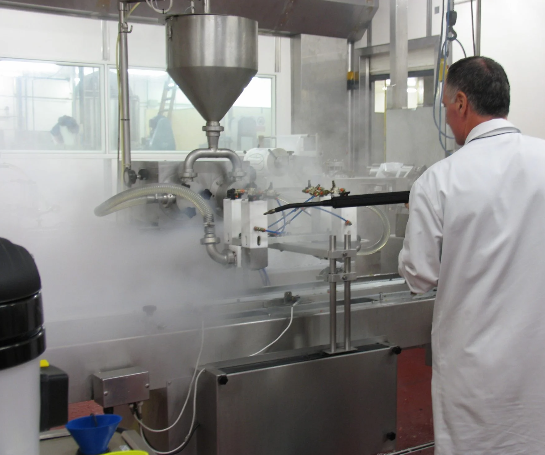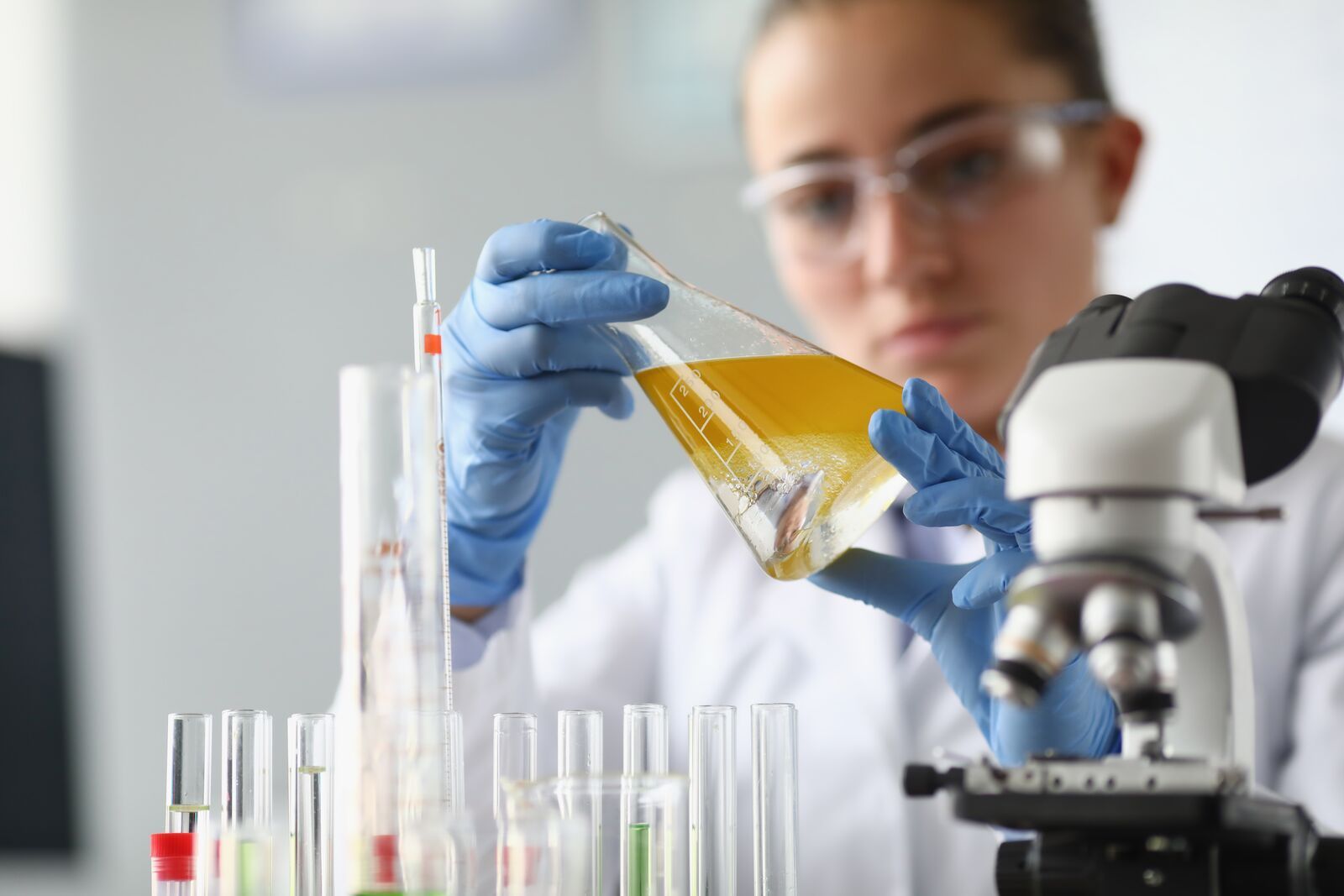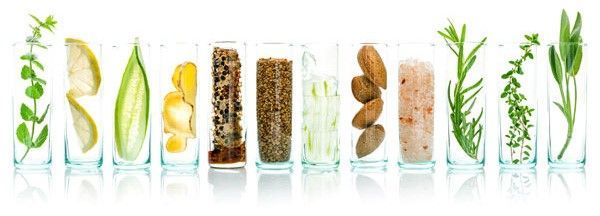LABSA and SLES: What Makes Them Key Ingredients in Industrial Cleaning and Detergents?
Imagine a large food processing facility at the end of a long production shift: grease-coated floors, stainless steel equipment stained with oil residues, and sanitation teams preparing for a thorough clean-up. In situations like these, industrial cleaning agents must work fast, cut through stubborn grime and rinse away easily. Two ingredients make this possible: LABSA (Linear Alkylbenzene Sulfonic Acid) and SLES (Sodium Lauryl Ether Sulfate).
LABSA is an anionic surfactant known for its powerful grease-cutting properties, while SLES is a milder surfactant that boosts foaming and enhances detergent stability. Together, they form the backbone of many industrial cleaning and detergent formulations, from degreasers to heavy-duty cleaners.
Their unique chemical properties and cost-effectiveness have made them essential in various sectors, including food processing, textiles, automotive and institutional cleaning. But what exactly makes them so effective - and why are they used so widely? Let’s take a closer look.
What are LABSA and SLES?
Chemical Composition and Structure
LABSA is an anionic surfactant composed of a linear alkylbenzene backbone attached to a sulfonic acid group. Its structure includes a hydrophobic alkyl chain and a hydrophilic sulfonate group, making it highly effective at breaking down oily soils and dispersing particles in water. LABSA’s strong surface activity and acidity make it particularly valuable in industrial formulations where powerful cleaning is required.
SLES is also an anionic surfactant, but its structure is based on an ethoxylated fatty alcohol (typically lauryl alcohol) linked to a sulfate group. This gives SLES a balance of cleansing power and mildness, with excellent foaming and emulsifying properties. Its molecular structure allows for better solubility and lower irritation potential compared to traditional sulfates like SLS.
How They’re Produced
LABSA is produced by sulfonating linear alkylbenzene, a compound typically derived from petroleum. The sulfonation process involves reacting the alkylbenzene with sulfur trioxide or oleum, resulting in the formation of the sulfonic acid group. The final product is often neutralized with an alkali to form the corresponding salt used in detergents.
SLES is manufactured through the ethoxylation of lauryl alcohol, where ethylene oxide is added to produce alcohol ethoxylates. This is followed by sulfation, where the ethoxylated compound is treated with sulfur trioxide and then neutralized (usually with sodium hydroxide) to form the final SLES product.
Together, these compounds deliver the cleaning power behind countless industrial detergent applications.
Key Functions in Industrial Cleaning and Detergents
Surfactant Action – How They Break Down Grease and Dirt
Both LABSA and SLES are surfactants - compounds that reduce the surface tension between liquids or between a liquid and a solid. Their core cleaning mechanism lies in micelle formation. When added to water, these molecules arrange themselves with their hydrophobic (water-repelling) tails pointed inward and their hydrophilic (water-attracting) heads outward, forming spherical structures called micelles.
These micelles trap grease, oils and dirt inside their hydrophobic cores, effectively lifting them from surfaces and suspending them in water. This emulsification process prevents re-deposition of soil, allowing contaminants to be rinsed away easily. In industrial environments, where residues may include heavy oils, fats and complex grime, this action is critical for achieving high cleanliness standards efficiently.
Foaming and Wetting Properties
Foam plays a vital role in many cleaning applications, especially in food processing, textile manufacturing and institutional sanitation. While foam doesn't directly clean, it extends contact time, spreads the surfactant evenly, and acts as a visual cue for coverage. It also helps suspend soils and provides a cushioning effect that reduces mechanical abrasion on surfaces.
SLES is particularly valued for its rich, stable foam and excellent wetting properties. It spreads quickly across surfaces and forms lasting foam, even in the presence of hard water. This makes it ideal for products like foam degreasers and high-foaming industrial cleaners.
LABSA, on the other hand, produces less foam but offers stronger degreasing power. In industrial formulations, it is often combined with SLES to balance cleaning efficiency and foaming performance. Together, they provide a synergistic effect - powerful soil removal with stable foam and improved surface wetting - making them indispensable in a wide range of industrial cleaning and detergent solutions.
Comparative Analysis – LABSA vs SLES
Efficiency and Performance in Industrial Use
When it comes to industrial cleaning, LABSA and SLES each bring distinct strengths. LABSA is known for its superior oil and grease removal capacity, making it ideal for heavy-duty degreasers and industrial surface cleaners. Its strong anionic nature allows it to break down tough residues quickly, especially in high-soil environments like metal processing, food plants, or automotive facilities.
SLES, while milder in action, excels in applications where foam generation and surface coverage are priorities. It’s highly effective at removing lighter soils and organic residues, making it suitable for general-purpose cleaners and foaming agents.
In terms of temperature tolerance, LABSA performs well at higher temperatures, retaining its degreasing ability under heat. SLES, although stable at moderate temperatures, may lose some foaming efficiency in extremely hot conditions.
Compatibility with Other Formulation Agents
Both LABSA and SLES are widely used in combination with other ingredients such as builders (e.g., phosphates, carbonates), solvents and chelating agents. However, SLES tends to be more chemically stable across pH ranges and is less reactive with additives, making it a more versatile option in complex formulations.
LABSA, while highly effective, can react with certain ingredients due to its acidic nature. It often requires neutralization to form a salt (e.g., LAS) before blending, especially in formulations with alkaline builders.
Cost and Availability
LABSA generally has a lower production cost, as it is derived from petroleum-based linear alkylbenzene, and benefits from a mature global supply chain. SLES, though slightly more expensive due to its ethoxylation process, is also widely available and competitively priced.
Both ingredients are
readily accessible on the global market, but pricing trends can fluctuate based on oil prices, ethylene availability, and regional production capacity. Their affordability and performance ensure continued dominance in industrial cleaning formulations worldwide.

Common Industrial Applications
Heavy-Duty Detergents
In industrial environments where grease, oils and residues are especially stubborn, LABSA and SLES are key components in heavy-duty detergent formulations. LABSA, with its strong degreasing ability, is commonly used in automotive cleaning products, such as engine degreasers and truck wash solutions. It breaks down petroleum-based contaminants quickly and effectively.
In metal degreasing, LABSA helps remove machining oils and industrial lubricants from metal surfaces before coating or further processing. Its high activity at elevated temperatures makes it well-suited for heated cleaning baths. Meanwhile, SLES is often included to boost foam and help stabilize the formulation, especially in commercial dishwashing detergents, where both cleaning power and foaming are needed.
Textile and Leather Industry Cleaning
In the textile and leather industries, both surfactants are used as wetting agents and scouring agents. During textile processing, LABSA assists in removing natural waxes, oils, and sizing agents from fibers, allowing for improved dye uptake and finishing. Its strong emulsifying action is crucial during the scouring stage, especially in cotton and blended fabrics.
SLES is often preferred in applications that require high wetting without excessive defoaming. It helps detergents penetrate quickly into fabric weaves or leather surfaces, enhancing the overall efficiency of the washing process without damaging the materials.
Institutional and Janitorial Products
For institutional and janitorial use, LABSA and SLES are found in concentrated formulations such as floor cleaners, restroom sanitizers, and all-purpose detergents. These products demand a balance of high-performance cleaning with safe handling characteristics.
SLES offers low skin irritation, making it ideal for formulations used in schools, hospitals, and public facilities. LABSA adds the necessary grease-cutting strength for heavily soiled areas. Together, they power a wide range of cleaning solutions that meet the demands of industrial hygiene and safety standards.
Environmental and Safety Considerations
Biodegradability of LABSA and SLES
Both LABSA and SLES are considered biodegradable surfactants, but their environmental profiles differ slightly. SLES has a higher rate of biodegradation under aerobic conditions and is often favored in formulations where eco-friendliness is a priority. It breaks down more readily in wastewater treatment systems, contributing less to long-term aquatic toxicity when properly managed.
LABSA is also biodegradable, particularly in its neutralized form (Linear Alkylbenzene Sulfonate or LAS), though the process is slower compared to SLES. However, LABSA is still widely accepted in industrial and institutional cleaning due to its high efficacy and compatibility with modern wastewater treatment technologies. In both cases, responsible use and proper discharge practices are essential to minimize environmental impact.
Safety Concerns and Handling
In terms of safety, both surfactants have low acute toxicity, but they do pose skin and eye irritation risks, especially in concentrated forms. SLES is generally considered milder and is used in personal care products for this reason. LABSA, due to its acidic nature, is more corrosive in raw form and must be neutralized before safe use in cleaning formulations.
Workplace safety precautions include wearing protective gloves, goggles, and appropriate clothing during handling, especially in production or mixing environments. Adequate ventilation and spill containment protocols should be in place, and Material Safety Data Sheets (MSDS) must be consulted before use.
While both LABSA and SLES are safe when formulated correctly, proper handling and environmental responsibility are crucial in industrial settings to protect workers and ecosystems alike.
Alternatives and Future Trends in Surfactants
Bio-Based Surfactants
As sustainability becomes a priority across industries, bio-based surfactants are gaining traction as alternatives to traditional petrochemical-derived options like LABSA and SLES. These greener surfactants are typically derived from natural sources such as coconut oil, palm kernel oil, or sugar-based feedstocks.
Examples include alkyl polyglucosides (APGs) and cocamidopropyl betaine, which offer good biodegradability, lower toxicity and skin-friendly properties. While they may not yet match LABSA’s degreasing power or SLES’s foaming ability in every application, advancements in formulation science are helping bridge the performance gap.
Regulatory Push Towards Greener Solutions
Governments and regulatory bodies are also playing a key role in steering the market toward environmentally safer surfactants. Under frameworks like REACH (Registration, Evaluation, Authorisation and Restriction of Chemicals) in the EU and EPA Safer Choice in the U.S., companies are encouraged (or even required) to adopt low-impact, biodegradable ingredients in their cleaning products.
These trends are driving innovation, with formulators seeking surfactants that balance performance, safety, and sustainability. While LABSA and SLES remain dominant due to their cost-effectiveness and efficiency, their long-term role may evolve as eco-friendly alternatives continue to develop and regulatory pressures mount.
FAQs
What’s the main difference between LABSA and SLES?
LABSA is a strong, acidic surfactant with excellent degreasing power, while SLES is a milder, ethoxylated sulfate known for its rich foam and low irritation potential.
Are LABSA and SLES safe for the environment?
Both are biodegradable under proper treatment conditions. SLES generally breaks down faster, while LABSA (especially as LAS) also meets biodegradability standards in many regions.
Can LABSA and SLES be used together in the same formula?
Yes. They are often combined to balance cleaning strength (from LABSA) and foaming/stability (from SLES) in industrial detergent formulations.
Why are LABSA and SLES favored over other surfactants?
They offer a cost-effective mix of performance, availability, and compatibility with a wide range of cleaning agents, making them ideal for industrial use.
Are there any regulations on their use in industrial products?
Yes. Their use is regulated by authorities such as
REACH (EU) and the
EPA (U.S.), which oversee safety, labeling, and environmental compliance.
Conclusion
LABSA and SLES remain essential pillars of industrial cleaning and detergent formulations, thanks to their powerful surfactant action, compatibility, and cost-efficiency. LABSA offers unmatched grease-cutting performance, while SLES enhances foam, wetting, and mildness, making them a perfect pair across a range of applications, from heavy-duty degreasers to institutional cleaners.
At DECACHEM, we recognize the critical role of high-performance surfactants like LABSA and SLES in industrial cleaning and offer reliable, compliant solutions tailored to modern formulation needs.
As industries evolve and environmental standards tighten, these ingredients continue to deliver reliable results while paving the way for innovation. The future points toward greener, bio-based alternatives, but LABSA and SLES will remain key players in the transition, bridging performance demands with growing sustainability goals.
















